Iran welcomes travelers with its boundless beauty and ancient glory. With diverse cultures, landscapes, and traditions, it offers an unforgettable journey into the heart of the Middle East. Whether you’re drawn to Mount Damavand’s rugged peaks, the lush forests of the North, or the mesmerizing expanse of the Lut Desert, Iran promises an enjoyable experience.
One of the most compelling reasons to visit Iran is its unparalleled natural beauty, where snow-capped mountains meet desert sands, and green oases contrast with arid landscapes. Every corner of the country offers breathtaking scenery, inviting visitors to explore its diverse ecosystems and marvel at sunrise and sunset colors.
Beyond its natural wonders, Iran boasts a rich history and culture that spans millennia. Ancient monuments, majestic mosques, and magnificent palaces tell stories of resilience and innovation, offering glimpses into a world steeped in tradition yet pulsating with life. From the grandeur of Persepolis to the intricacies of Persian architecture, Iran invites travelers to immerse themselves in its storied past and vibrant present. You can reach out for more information and details about a trip to Iran.
Persian Hospitality
Iranians are well-known for their hospitality, generosity, and warmth. The spirit of kindness transcends cultural boundaries. Renowned worldwide for their innate hospitality, Iranians welcome travelers with open arms and are eager to share their homes and hearts. This genuine hospitality extends beyond mere gestures of goodwill; it reflects the deep-seated belief that guests are a blessing, deserving of the utmost care and respect. From the moment you set foot in Iran, you’ll be enveloped in a sense of belonging as locals go out of their way to ensure your comfort and well-being.
What sets Iranian hospitality apart is its sincerity and authenticity. Whether it’s a spontaneous invitation to join a family meal or a heartfelt gesture of assistance when you’re in need, Iranians embody the true essence of kindness – genuine, unconditional, and sincere. This spirit of generosity is deeply ingrained in the Iranian culture, reflecting a longstanding tradition of treating guests as cherished members of the family. So, if you’ve ever dreamed of experiencing hospitality at its finest, look no further than Iran, where every encounter is an opportunity to start meaningful connections and create lasting memories.
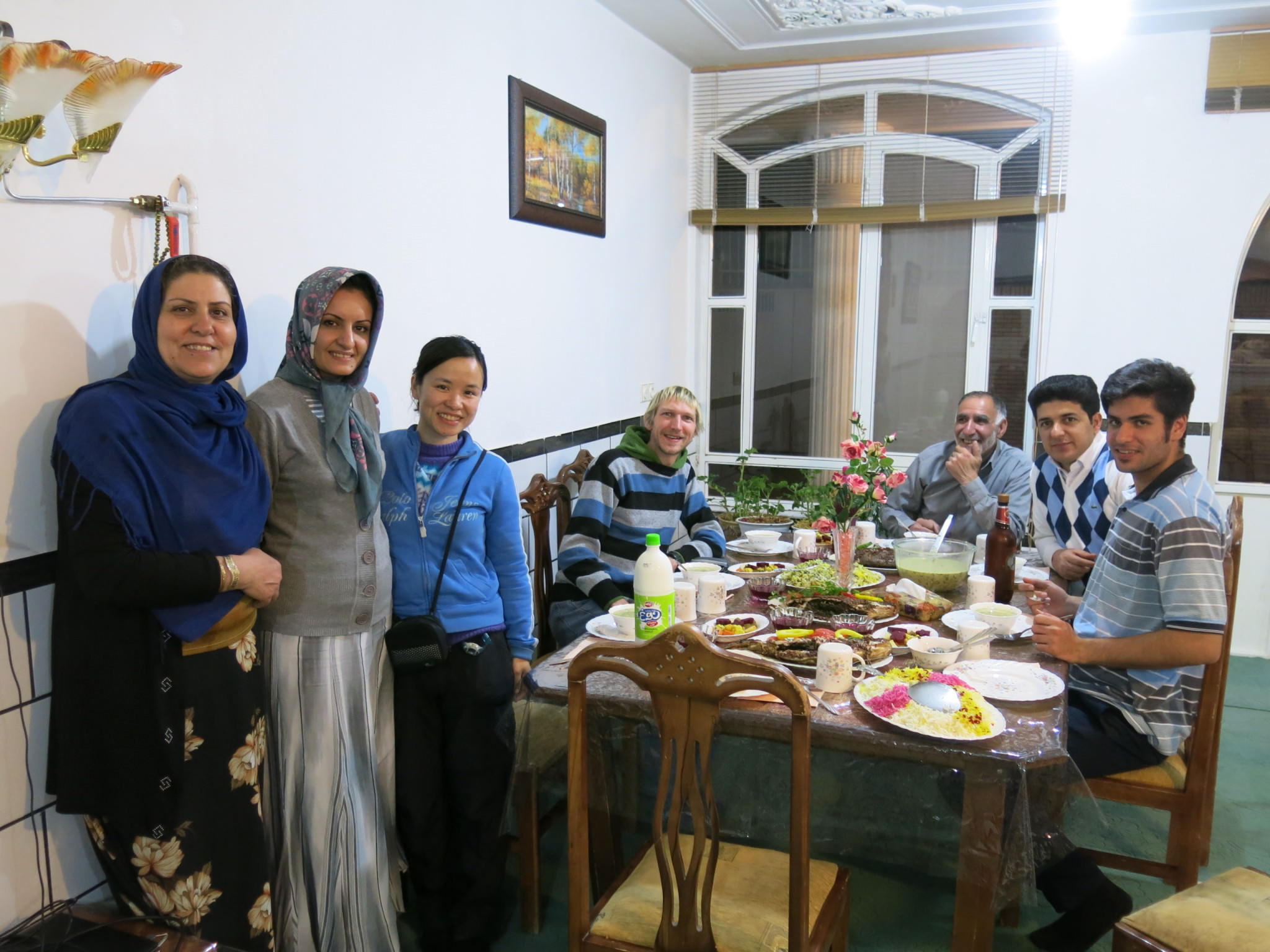
Iranian Etiquette
In Iran, politeness and etiquette are not just social norms. They’re deeply ingrained cultural practices that shape everyday interactions, and are entered around the concept of “taarof.” This traditional system emphasizes making others feel valued, often leading to polite exchanges where individuals insist on putting the other person’s needs first. Navigating Iranian etiquette involves understanding the nuances of refusing and accepting offers graciously, as well as following customs like gift-giving with humility and respect, such as initially declining a gift before accepting it with gratitude.
Iranian etiquette extends beyond verbal interactions to encompass social customs reflecting hospitality and respect, including punctuality, removing shoes when entering a home, and appreciating multiple servings of food. By embracing the principles of taarof and adhering to established customs, travelers can establish meaningful connections and gain a deeper understanding of Iranian culture and tradition. Embracing Iranian etiquette is essential for fostering positive and respectful interactions during travels, whether enjoying a meal or exchanging gifts with locals.
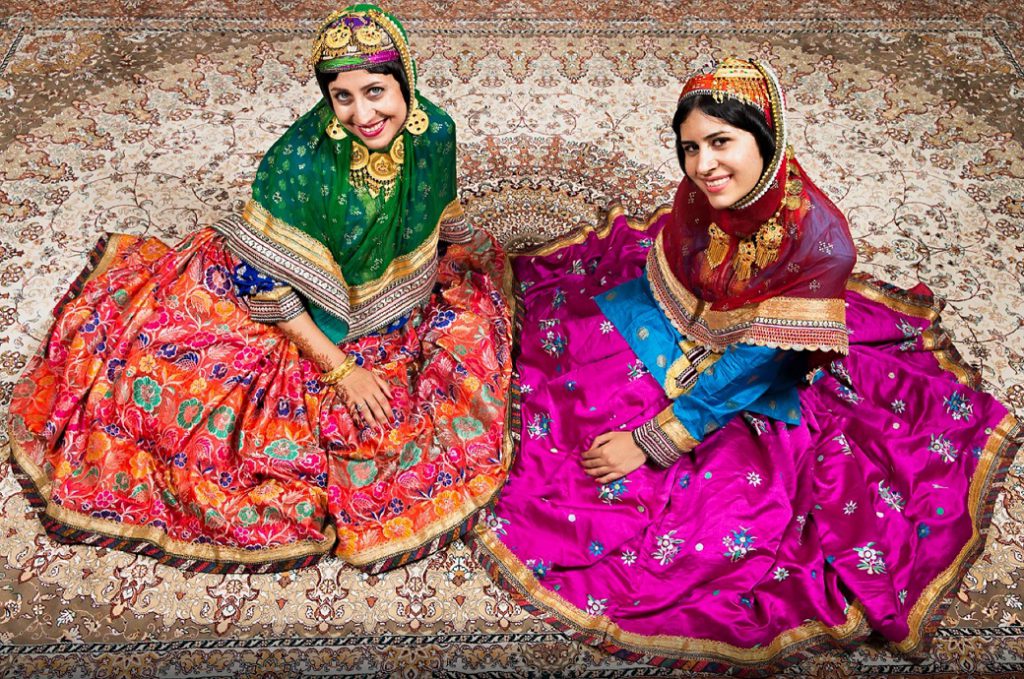
Iranian Culture and Traditions
Iranian culture is steeped in rich traditions and rituals that span millennia, offering a glimpse into the nation’s deep-rooted heritage and values. Nowruz, the Persian New Year, stands as one of the most cherished celebrations in Iranian culture, marking the arrival of spring. It symbolizes renewal and rebirth in Iranian culture. Families gather to observe ancient customs, such as setting the “Haft Seen” table adorned with seven symbolic items beginning with the Persian letter “S,” each representing blessings for the year ahead. Nowruz festivities continue for thirteen days, culminating in joyous gatherings, feasting, and the exchange of gifts among loved ones.
Yalda Night, also known as Shabe Yalda or Shabe Chelle, is another beloved tradition observed on the longest night of the year, marking the winter solstice. Families come together to commemorate the triumph of light over darkness, staying awake throughout the night to engage in storytelling, poetry recitations, and eating traditional foods such as pomegranates and watermelon.
Chaharshanbe Soori, or Charshambe Suri, is a prelude to Nowruz, celebrated on the eve of the last Wednesday before the New Year. This fiery festival involves leaping over bonfires to symbolize purification and the casting away of misfortunes while ushering in blessings and good fortune for the year ahead.
Iranian culture also includes rich religious ceremonies and customs, deeply intertwined with the nation’s spiritual identity. Muharram, the first month of the Islamic lunar calendar, holds particular significance for Shia Muslims, who commemorate the martyrdom of Imam Hussein, the grandson of the Prophet Muhammad, during the Battle of Karbala. Mourners participate in processions and recite elegies.
Additionally, Iranian funeral traditions blend Islamic rituals and cultural practices, including reciting prayers, washing and shrouding the deceased, and communal mourning gatherings. Other customs, such as “sur dadan” (spilling water behind a traveler) for protection, “nazri” offerings at religious sites, and burning “espand” seeds to ward off evil spirits, further exemplify the intricate beliefs and traditions that define Iranian culture.
Historical Marvels
Once the heart of the great Persian Empire stretching from Greece to China, Iran boasts a treasure trove of architectural marvels and historical sites that reflect its rich and diverse cultural heritage. Despite its political challenges, Iran remains a veritable cradle of civilization, with over twenty UNESCO World Heritage Sites showcasing the country’s mastery of geometry and design across millennia. These cultural gems, a few of which you can find below, not only serve as testaments to Iran’s storied past but also offer insights into humanity’s shared history and ingenuity.
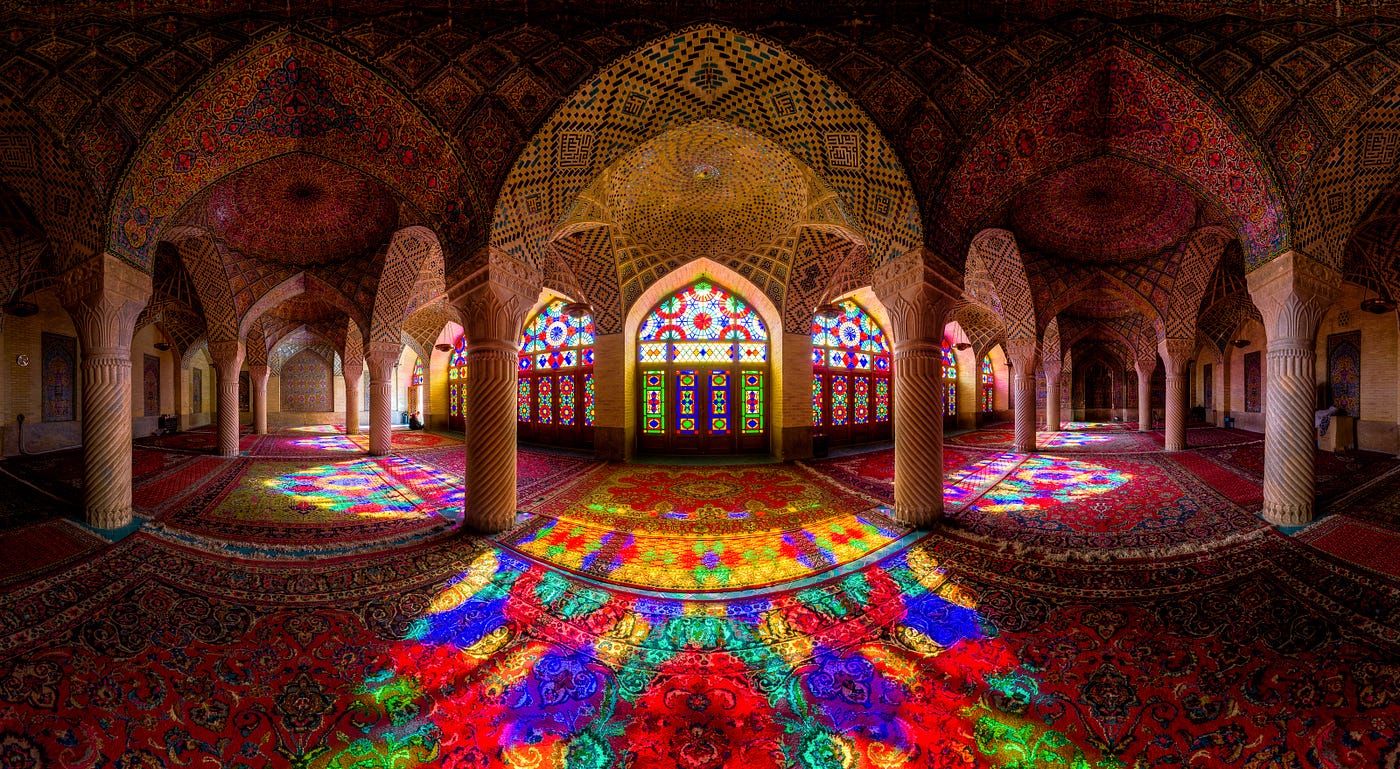
Persepolis, Shiraz
Persepolis, located in the northeast of Shiraz, showcases the grandeur of ancient Persia. Dating back to 515 BC, this awe-inspiring site boasts majestic buildings, marble staircases, and intricate relief sculptures adorn its landscape. Persepolis continues to captivate visitors with the remnants of its architectural prowess, offering a glimpse into the rich history of the Achaemenid Empire.
As one of the first three sites to join UNESCO in 1979, Persepolis, also known locally as Takhte Jamshid, served as the ceremonial capital of the Achaemenid Empire during the 5th century BC. Constructed under the visionary leadership of Cyrus the Great, Darius I, and King Xerxes, this historic site boasts massive columns, former palaces, and intricate reliefs depicting the diverse nationalities that once thrived within its walls. Climbing the steps to enter the Gate of All Nations, visitors are transported back in time, allowing them to marvel at the magnitude of this once magnificent empire and appreciate the enduring legacy of ancient Persia.
Golestan Palace, Tehran
Persepolis, located in the northeast of Shiraz, showcases the grandeur of ancient Persia. Dating back to 515 BC, this awe-inspiring site boasts majestic buildings, marble staircases, and intricate relief sculptures adorn its landscape. Persepolis continues to captivate visitors with the remnants of its architectural prowess, offering a glimpse into the rich history of the Achaemenid Empire.
As one of the first three sites to join UNESCO in 1979, Persepolis, also known locally as Takhte Jamshid, served as the ceremonial capital of the Achaemenid Empire. Constructed under the visionary leadership of Cyrus the Great, Darius I, and King Xerxes, this historic site boasts massive columns, former palaces, and intricate reliefs depicting the diverse nationalities that once thrived within its walls. Climbing the steps to enter the Gate of All Nations, visitors are transported back in time, allowing them to marvel at the magnitude of this once magnificent empire and appreciate the enduring legacy of ancient Persia.
Sheikh Lotfollah Mosque, Isfahan
Sheikh Lotfollah Mosque is located within Isfahan’s iconic Naqsh-e Jahan Square. It represents Iran’s rich history dating back to the 17th century. Renowned for its exquisite tilework and intricate corbeling, this architectural masterpiece is a testament to Safavid Iranian craftsmanship. Revered for its harmonious proportions, Sheikh Lotfollah Mosque is often hailed as a pinnacle of Safavid architecture, showcasing the artistic prowess of the era.
Sheikh Lotfollah Mosque holds a significant place in Isfahan’s architectural landscape. As one of the first monuments to grace the square, it has played a vital role in shaping the city’s identity. Visitors are drawn to the mosque for its architectural splendor and historical significance, offering a window into the rich cultural heritage of Iran’s Safavid period.
Bistoun, Kermanshah
Bistoun, located in Kermanshah, is one of Iran’s most remarkable historical sites, offering a vivid glimpse into the country’s rich past. As a veritable history book, Bistoun encapsulates diverse epochs, from caves dating back to the Stone Age to remnants from over 4,000 years ago, as well as historical attractions from more recent centuries. This extensive chronicle of history underscores the enduring significance of Bistoun across various dynasties, highlighting its role as a cultural and historical hub in Iran. With 28 nationally recorded historical landmarks, including stone reliefs, caves, caravanserais, and a castle, Bistoun presents a captivating mosaic of Iran’s ancient heritage.
Bistoun welcomes visitors with its wealth of historical treasures and archaeological wonders. The site’s diverse attractions, ranging from ancient caves to well-preserved stone reliefs, offer a comprehensive journey through Iran’s storied past. Each artifact and landmark in Bistoun serves as a testament to the ingenuity and creativity of past civilizations, inviting modern-day explorers to unravel the mysteries of bygone eras. Whether marveling at the intricate carvings adorning the rocky cliffs or delving into the depths of ancient caves, visitors to Bistoun are rewarded with a profound appreciation for Iran’s rich cultural heritage and archaeological legacy.
Persian Cuisine
Iranian cuisine, known as Persian cuisine, is a tapestry of flavors and culinary traditions woven over thousands of years. Renowned for its diverse range of ingredients, intricate flavors, and vibrant presentation, Persian food reflects the rich cultural heritage of Iran. However, each region in Iran boasts its unique dishes and culinary customs. Common threads bind them together, such as the prominent use of fresh herbs, the delicate balance of sweet and sour flavors, and the skillful incorporation of spices. Rice and bread often serve as the foundation of Persian meals, complemented by an assortment of meats, vegetables, and aromatic spices, creating a symphony of tastes and textures.
The essence of Persian cooking lies in the art of harmonizing flavors and textures to create a culinary experience that is both satisfying and culturally significant. Whether savoring the aromatic fragrance of saffron-infused rice or relishing the rich flavors of slow-cooked stews, Persian cuisine tantalizes the senses and nourishes the soul. Beyond its gastronomic appeal, Persian food reflects Iran’s cultural sophistication and agricultural abundance, embodying centuries-old traditions and customs passed down through generations. Through its diverse dishes and culinary techniques, Iranian cuisine offers a window into the heart and soul of a nation, inviting diners on a journey of discovery and delight.
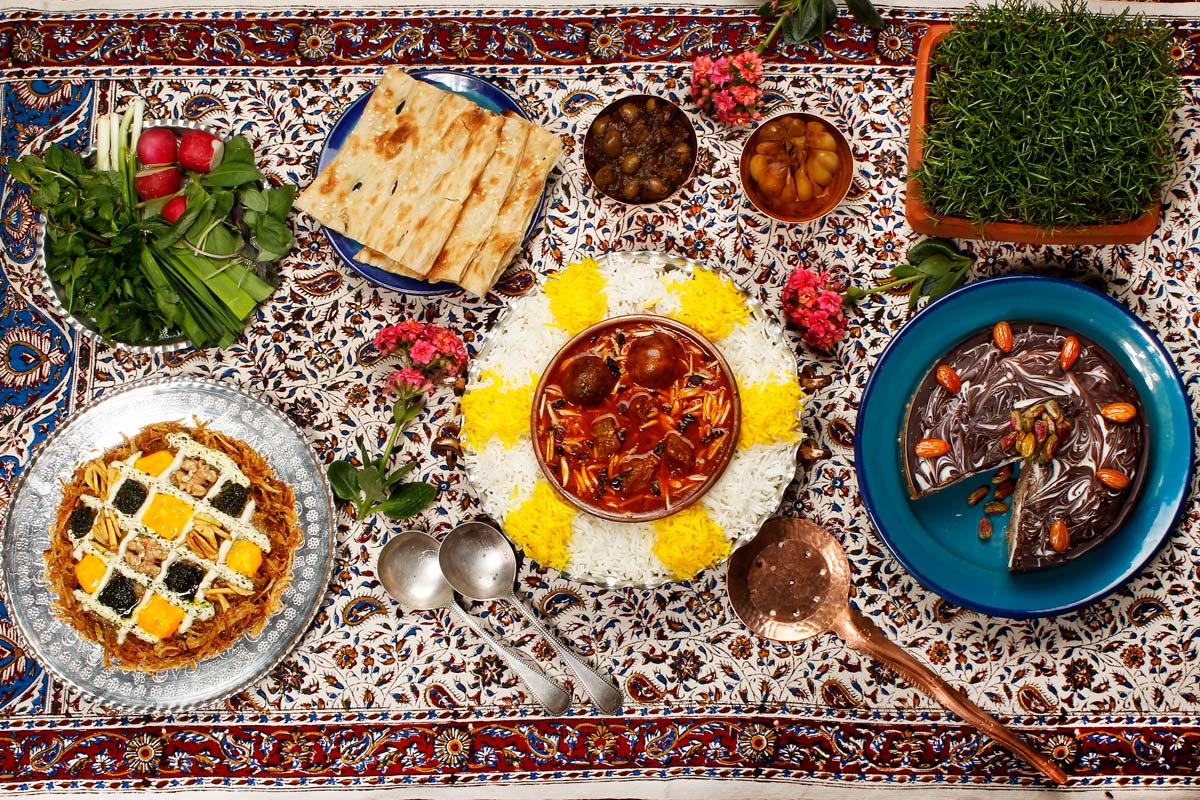
Some of the most beloved Iranian dishes include Ghormeh Sabzi, a fragrant stew bursting with green herbs, kidney beans, and tender meat, served alongside fluffy white rice. Fesenjan, or Pomegranate Walnut Stew, showcases the delicate balance of sweet and sour flavors, with chicken and duck meat simmered in a rich sauce of ground walnuts and pomegranate molasses. Joojeh Kabab, a marinated and grilled chicken dish, epitomizes the art of Persian grilling, infusing the meat with layers of flavor from onion, lemon, and saffron. Chelow Kabab, Iran’s national dish, features skewered meats served with aromatic saffron rice, grilled tomatoes, and yogurt, embodying the essence of communal dining and culinary tradition in Iran.
Bazaars and Markets
Bazaars in Iran offer a glimpse into the heart and soul of the country’s vibrant culture and commerce. These marketplaces are not just places to shop but lively hubs where locals gather, trades are made, and stories are exchanged. Iranian bazaars are renowned for their unique architecture, which often includes intricate tilework, vaulted ceilings, and winding alleyways that lead to hidden treasures.
One such iconic bazaar is the Tajrish Bazaar in Tehran, located in the northern part of the city. Visitors immerse themselves in the sights, sounds, and smells of everyday life of Tehran, browsing through everything from spices and fruits to jewelry and handcrafted goods. Similarly, the Tehran Grand Bazaar, in the heart of the capital, is a labyrinth of narrow alleys and bustling courtyards where visitors can discover traditional shops and rare finds while soaking in Iran’s rich history and customs.
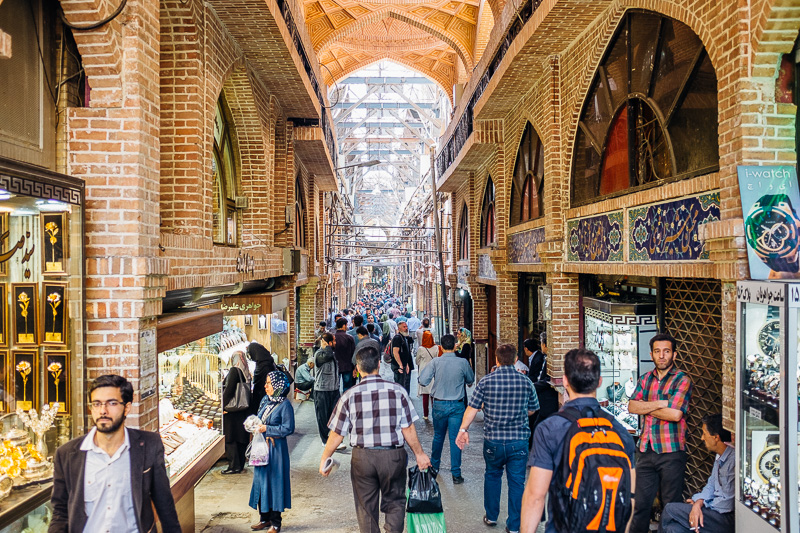
In Shiraz, the Vakil Bazaar, located in the historic Zand Complex, is a must-visit destination. This enchanting bazaar offers a glimpse into the city’s past, with its maze-like corridors and stalls selling various goods, including carpets, glassware, and textiles. Meanwhile, the Isfahan Bazaar, also known as the Imperial Bazaar, is a sprawling network of streets and shops in Naqh-e Jahan Square.
Visitors can wander through centuries-old passageways, admiring the intricate architecture and browsing for spices, handicrafts, and exquisite carpets. Lastly, the Bazaar of Kashan is a testament to Iran’s rich cultural heritage, with its historical charm and stunning architecture drawing visitors from far and wide. Whether exploring the grandeur of Isfahan’s bazaar or getting lost in the winding lanes of Kashan’s marketplace, visiting these iconic bazaars is an essential part of any trip to Iran.
Iran, an Unforgettable Destination
Tourists should visit Iran for an unforgettable journey of safety, warmth, and cultural richness. With its reputation for safety, travelers can explore Iran confidently, whether navigating its bustling cities or meandering through its enchanting landscapes. Iran offers a captivating glimpse into its millennia history, from the ancient wonders of Persepolis and Pasargadae to the architectural marvels of its mosques and palaces.
The warmth of Iranian hospitality is legendary, as visitors are welcomed with open arms and genuine kindness, inviting them to experience the authentic charm of Iranian culture firsthand. With its diverse cuisine, vibrant bazaars, and intricate handicrafts, Iran tantalizes the senses and promises a journey filled with unforgettable moments and cherished memories.
The flavors of Persian cuisine, the bustling Tehran Grand Bazaar, and the stunning architecture of Isfahan’s mosques are examples of Iranian attractions that captivate travelers mainly due to the relaxed atmosphere, friendly locals, and timeless allure. Don’t hesitate to check out our tours and seek more information from our support team.